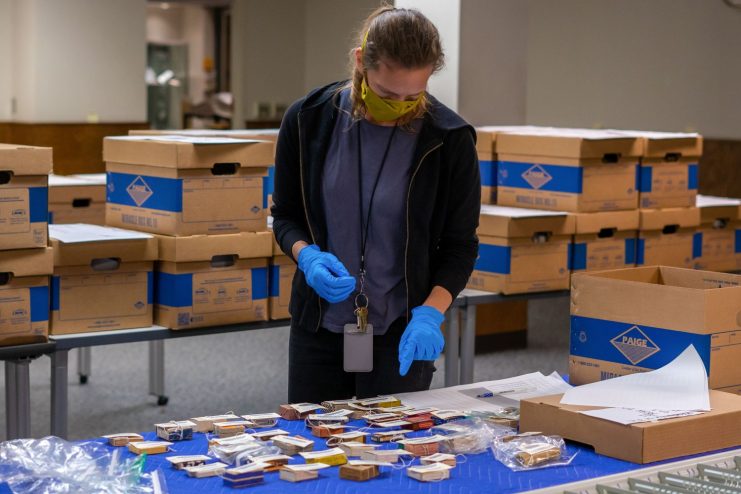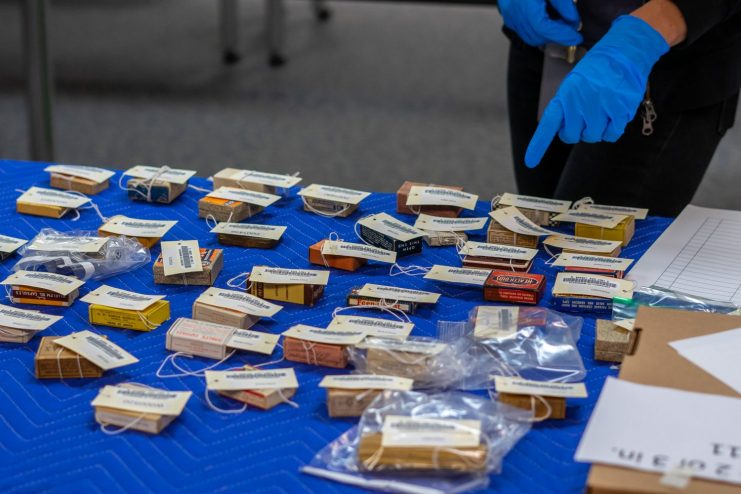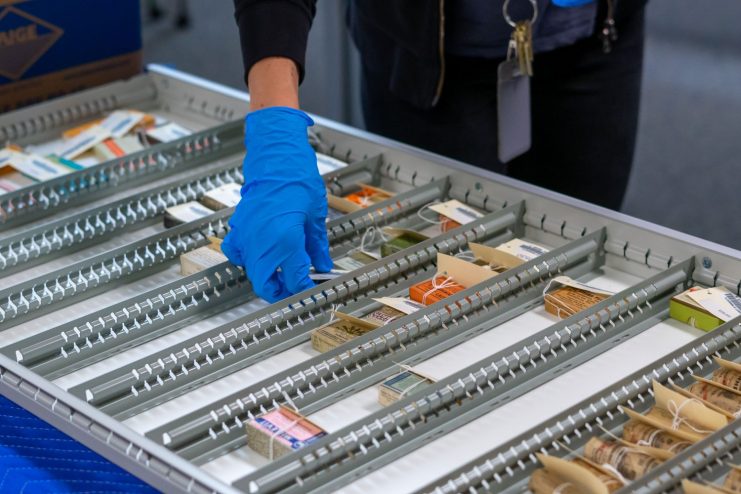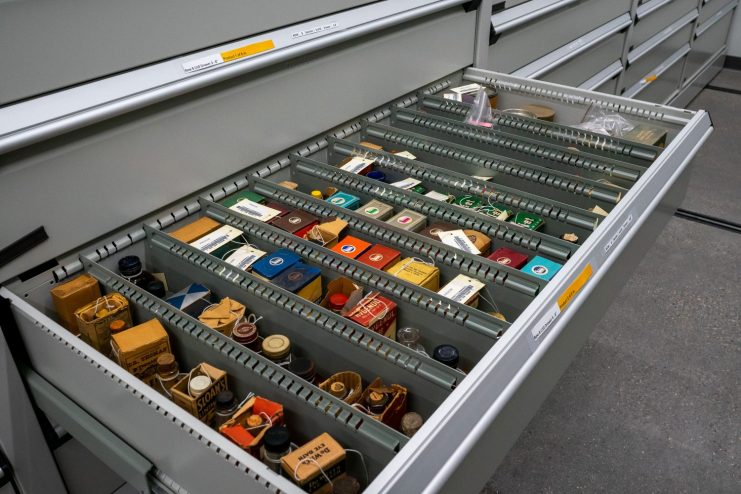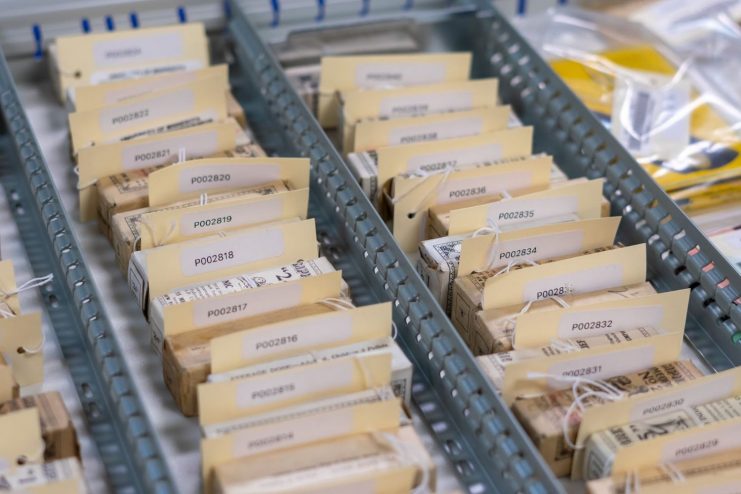by Lisa McGuire
It’s not every day that a library with 73,000 print materials dating back to 1430 and 8,000 artifacts gets a new home, but for the Wangensteen Historical Library of Biology & Medicine that day is today. Preparing a collection of this size to move into newly built space in the Phillips-Wangensteen building is a massive undertaking that represents the coordinated efforts and planning from curators, conservation specialists, architects, designers, and librarians to be successful. Curators Lois Hendrickson and Emily Beck are excited by the new possibilities that come with a historic collection that will be preserved for the next 500 years in a purpose-built space. Let’s take a look at how some of the collection’s artifacts are prepared for the move.
Step 1: Careful staging
Conservation specialist Anna Shepard is working with a collection of pharmaceutical artifacts. Notice that the table has a protective cloth and Anna is wearing gloves to protect the paper packaging of the pharmaceutical boxes. Anna is making sure that each individual box has the correct barcode attached to it.
Step 2: Labeling is key
Here is a closer view of the artifacts with their individual barcode labels. Each barcode has been printed on a sticker that is then applied to high-quality paper which will not degrade or damage the box underneath over time. Care is taken to make sure that each artifact has been matched with the correct barcode. Pharmaceutical artifacts like these are regularly used in a variety of classes at the U of MN, from the history of medicine to graphic design.
Step 3: Placing the materials
After determining that each item has its corresponding barcode, Anna places the item in its correct spot in the tray. The trays were specifically designed for small items like these pharmaceutical boxes. Artifacts like these were originally produced during the first half of the 20th century, and would have been a common sight in most American pharmacies. Many held over-the-counter medicines like today’s Tylenol. Additionally some of these artifacts contain the raw ingredients that pharmacists used to compound prescription medicines.
Step 4: Finding their home
The completed tray housing these artifacts is now placed in the correct slot in the collection shelving. In the future, the library catalog will be updated to inform our staff and users where each item is housed so they can be easily retrieved for teaching or research purposes.
Step 6: Dotting I’s and crossing T’s
Here’s another close-up view of a different set of artifacts, all barcoded and arranged in their trays and placed in their drawer in the WHL’s new collection space. You can see that this drawer contains bottles, and over-the-counter and patent medicines that early 20th-century Americans used to help cure all kinds of ailments, from upset stomachs to headaches.
The staff at Wangensteen is looking forward to fall semester 2021 so they can take advantage of this new organizational and conservation system. There will be great opportunities for years to come as researchers and students learn from all of these historical objects that document the history of health.


